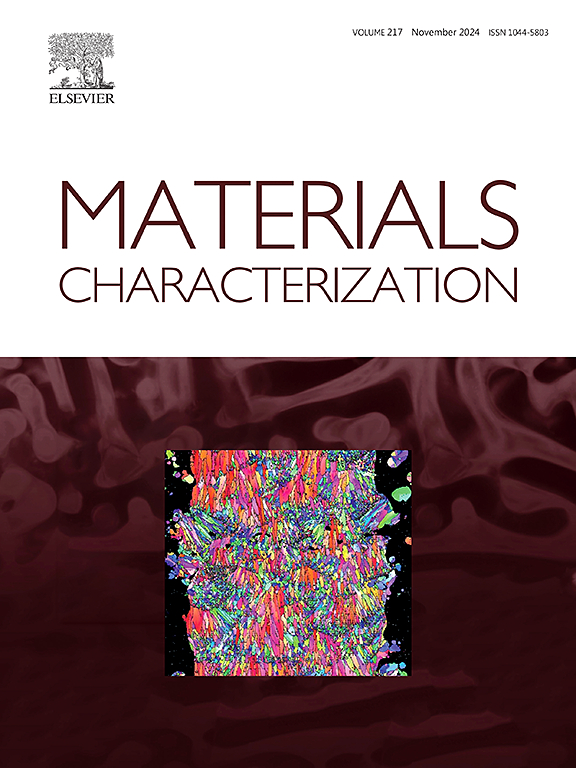Effect of 800 °C/10,000 h aging-induced μ phase on plasticity in Ni-Co-Cr based superalloys
IF 4.8
2区 材料科学
Q1 MATERIALS SCIENCE, CHARACTERIZATION & TESTING
引用次数: 0
Abstract
Since the concentration of refractory elements, such as W and Mo, increases in superalloys, the brittle μ phases, specifically (Co, Cr)7(W, Mo)6, tend to precipitate readily. These μ phases frequently serve as crack initiation sites, leading to a significant reduction in the lifetime of alloys. The present study focuses on the effect of μ phases on room-temperature tensile plasticity of a Ni-Co-Cr-based superalloy containing 4.0 wt% W and 4.0 wt% Mo during long-term aging. The objective is to analyze the precipitation behavior of μ phases and their influence on the elongation. With the precipitation of μ phases, W and Mo diffuse from the γ matrix into the μ phase, and meanwhile, the size and area fraction of μ phases initially increase before stabilizing. Notably, at an aging temperature of 800 °C, Mo exhibits a stronger diffusion ability compared to W. The depletion of solute atoms in the γ matrix, results the weakening of solid solution strength. Therefore, during tensile tests, more intergranular cracks propagate along the γ matrix interface near μ phases and γ' precipitates. Regarding the fracture characteristics, as the size and area fraction of μ phase increase, a greater number of dislocations pile-up near grain boundaries, leading to the formation of numerous creaks through shearing and bypassing. Moreover, the elongation significantly decreases from 17 to 19 % to 8–12 % after aging for more than 1000 h. This work enhances our understanding of μ precipitation and its effect on the material's plasticity.
求助全文
约1分钟内获得全文
求助全文
来源期刊

Materials Characterization
工程技术-材料科学:表征与测试
CiteScore
7.60
自引率
8.50%
发文量
746
审稿时长
36 days
期刊介绍:
Materials Characterization features original articles and state-of-the-art reviews on theoretical and practical aspects of the structure and behaviour of materials.
The Journal focuses on all characterization techniques, including all forms of microscopy (light, electron, acoustic, etc.,) and analysis (especially microanalysis and surface analytical techniques). Developments in both this wide range of techniques and their application to the quantification of the microstructure of materials are essential facets of the Journal.
The Journal provides the Materials Scientist/Engineer with up-to-date information on many types of materials with an underlying theme of explaining the behavior of materials using novel approaches. Materials covered by the journal include:
Metals & Alloys
Ceramics
Nanomaterials
Biomedical materials
Optical materials
Composites
Natural Materials.
 求助内容:
求助内容: 应助结果提醒方式:
应助结果提醒方式:


